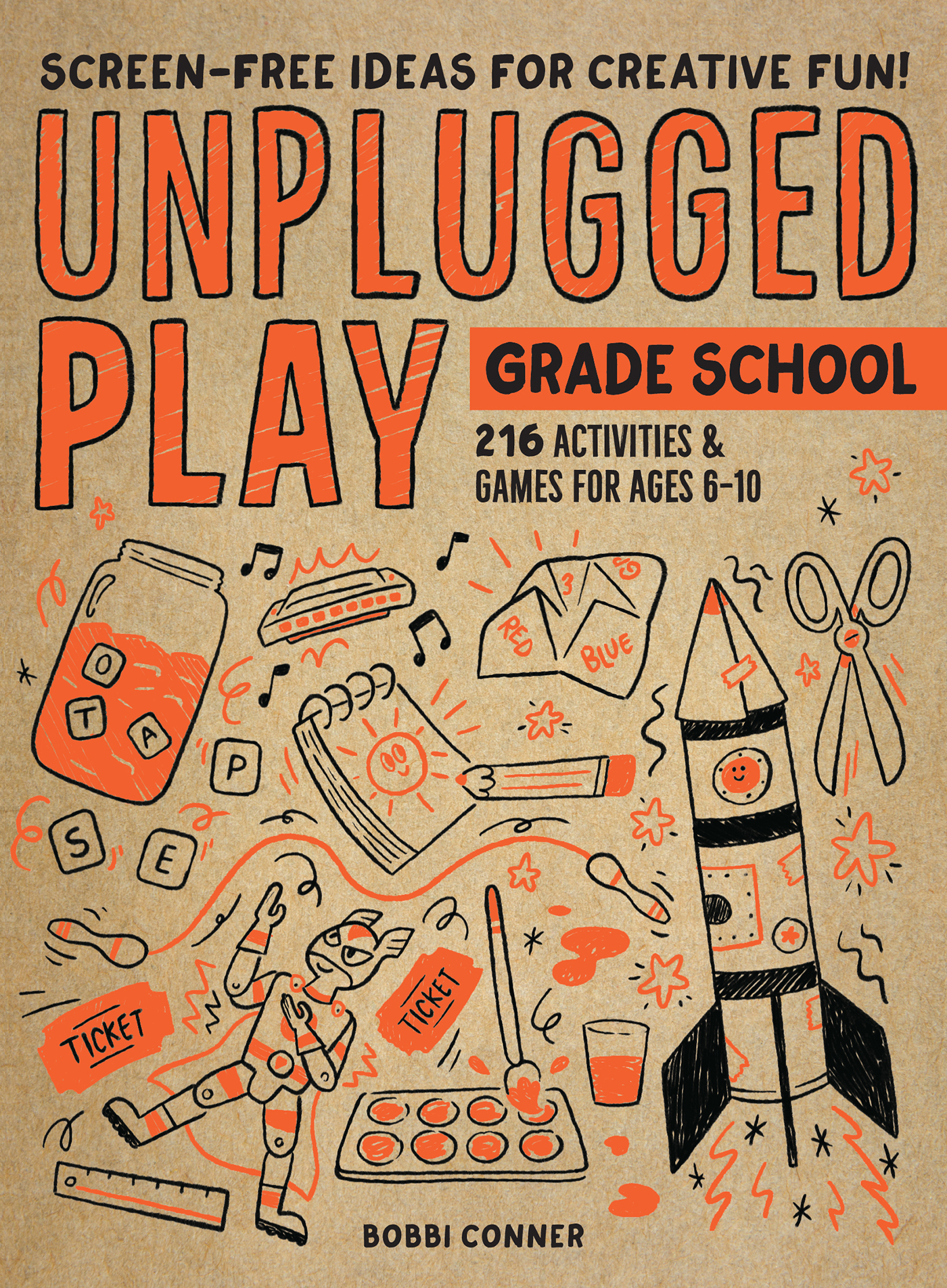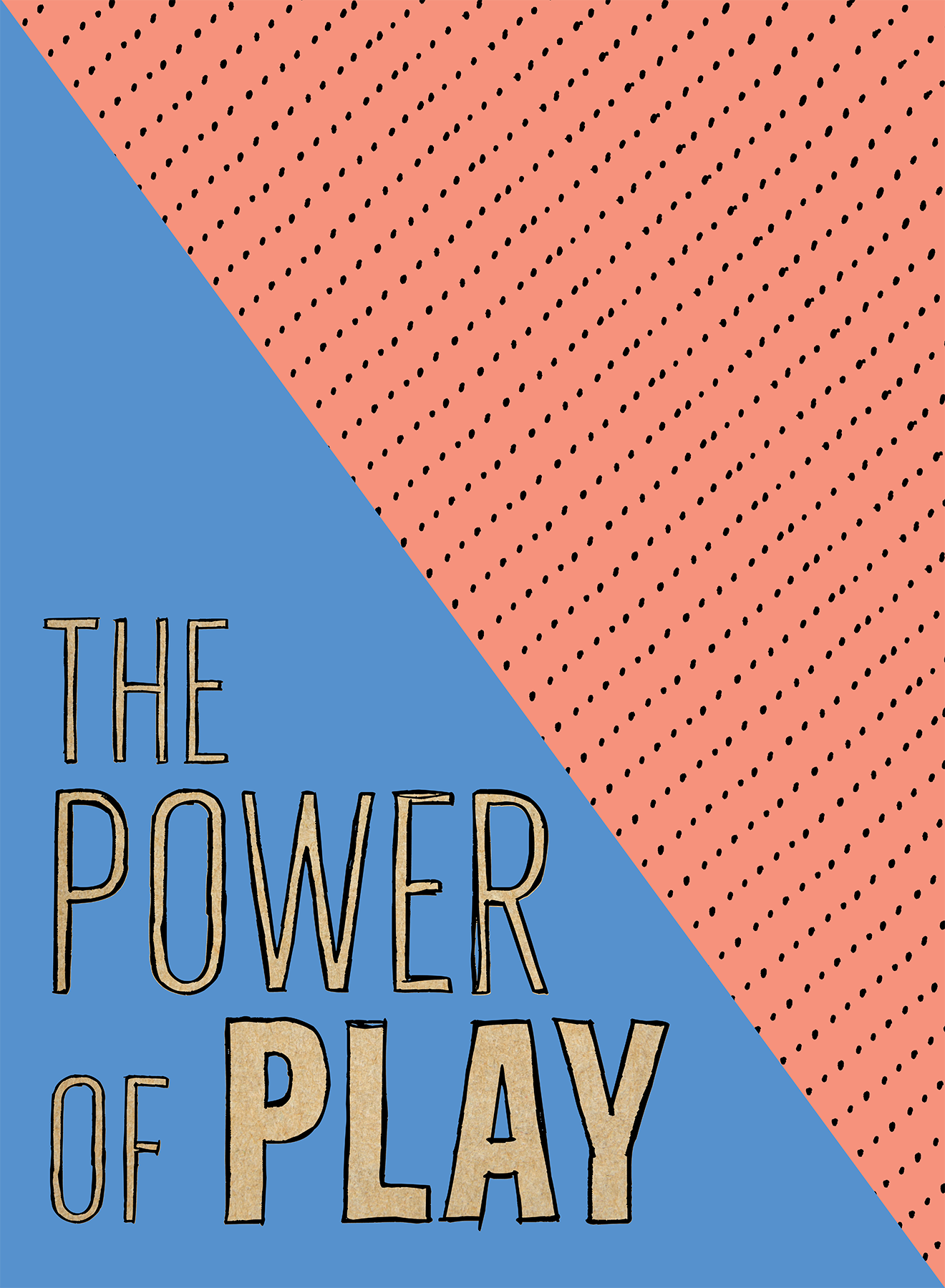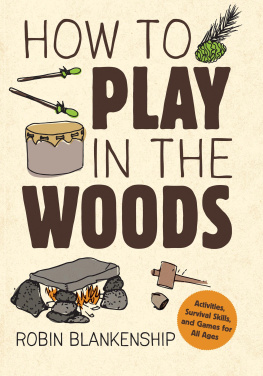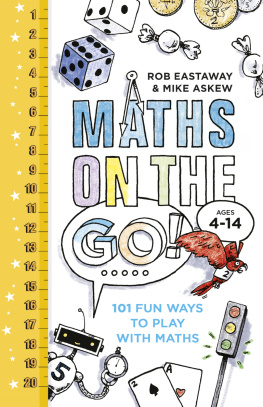

Activities & Games for Ages 610
Bobbi Conner
workman publishing * new york
For Cassidy, Olivia, and Peter

Contents

Preface
Play Matters
Whyand HowI Wrote This Book
C hildren like to play. And why wouldnt they? Its fun! So it makes sense that the more they play, the more they will want to play again. Its a lovely, self-perpetuating cycle that most parents intuitively understand. But what is harder to grasp is the power of play to shape a childs world, particularly a world that is high-tech, fast paced, and plugged in.
And thats why I wrote this book. During my twenty years as host of the nationally syndicated Parents Journal public radio show, Ive chatted with many of the leaders in the world of child development. Whether it was David Elkind or Penelope Leach, Fred Rogers or Benjamin Spock, they allevery one of themspoke of the significance of play. And now I want to help parents help their children enjoy the wholesome, old-fashioned experience of playing creatively and freely... without technology. I started by collecting and inventing hundreds of games, and then I tested them one by one on different groups of children, ages twelve months to ten years. When the kids rejected a game or an activity, I rejected it too. When a game inspired them to come up with a variation of their own, I appropriated their invention. The result is the more than two hundred unplugged games that you have here.
But why unplugged, you may ask. Since most of us embrace technology to some extent every daycan you imagine a world without email?it may seem far-fetched to suggest that parents minimize the amount of time their child spends connected to anything with a screen, a plug, or a battery. Besides, its so easy to plunk a kid in front of a screen! But children need to interact with living, breathing human playmates, and not be held captive by the lights, sounds, and images on a screen. They need to run, chase, ride, skip, and jump, and not sit still for prolonged blocks of time. We need only look at the huge rise in childhood obesity to understand how children suffer physically when they remain inactive.
But the toll on kids who rely primarily on electronics for their entertainment goes way beyond some extra pounds. When a child sits in front of a screen, he has no opportunity to connect with the natural worldmud, water, sand, stones, leaves, seeds, animals, insects, sunshine, and rain. It might not seem like such a huge loss in the moment when your child is contentedly clicking buttons on the keypad, but there is something essential about a child getting his hands messy. In addition, because electronic games are preprogrammed with finite possible responses, they limit the imagination. A child who draws, paints, builds, and invents knows a creativity that has no boundaries. By learning that she has the ability to shape her worldeither alone or in the company of othersshe gains the self-confidence she needs to grow into a problem-solving, creative adult.
And who could ask for more?
Bobbi Conner

Y ou may feel as though life has changed in an essential way, and that there is no time for the kind of old-fashioned, wholesome, playful childhood that you had envisioned for your child. But there are the same twenty-four hours in each day and the same seven days in each week. Whats changed is the pace of life.
To a large extent, you, as the parent, are the keeper of the time in your family. You arrange the family schedule; you set dinnertime, bath time, and bedtime; and you get your child to appointments, childcare, playgroups, and school on time. As the keeper of the time, you have the power and authority to slow time down. And if you make that choice, youll probably find that your child has more time for all sorts of unplugged play.
Let me give you an example from my own life as a mom. When my son was in kindergarten and my daughter was three, I worked full-time. I was a single parent earning a living for our family of three by day and doing all the typical parenting tasks by night. I always felt rushed. I picked my children up from their Montessori school each day at 5:00 p.m. and headed home. The moment I walked in the door I jumped right into making dinner. (And in the back of my mind I was thinking about the time needed for baths, bedtime stories, and laundry too.) So I scurried around the kitchen while the children played on their own. Or at least thats what they were supposed to do. Often, after just a minute or two, a sibling squabble would set off a group meltdown.
This went on for several days in a row that first week of school, and I realized something needed to change. The next day I put a happier plan in place. I walked in the house and said to my children, Lets get a snack and read a story together! (I meant now, not later tonight.) We grabbed three apples from the fruit bowl and a small plate of sliced cheese. We went into the living room, snuggled up on the couch, and ate our snack while I began to read Caps for Sale. It was a nourishing, calming time, and after fifteen minutes my son said, I want to play with my LEGOs now. My daughter said, Me too. Off they went. I started dinner knowing everyone was happy and reconnected. We all had the time and attention we needed to make a graceful transition into our evening together as a family. Our new after-work and after-school routine made an immediate, positive difference in our lives over the years. I often recalled how I had slowed down time and applied this same smart thinking whenever our routine and mood felt off-kilter.
Play is not trivial. When children play, theyre doing important work.
Fred Rogers
Emmy Awardwinning creator and host of Mister Rogers Neighborhood
I mention this lesson from my own life for three reasons. One, to assure you that simple solutions are often best for fixing family routines that are out of sync. Two, to encourage you to stop, take a breath, and make whatever changes are necessary to diminish that anxious feeling that comes when time closes in on you. And finally, to remind you that children need time to play. It was true when you were a child and it is just as true for infants, toddlers, preschoolers, and older children today.

The Simple Pleasures
Play is serious business when it comes to a childs health and development, according to the American Academy of Pediatrics (AAP). The AAP clinical report, The Power of Play, explains how and why playing with parents and peers is the key to building thriving brains, bodies, and social bonds. Here are some of the benefits of play:
Helps prevent obesity, heart disease, and diabetes
Builds strong bones and muscles
Improves an overall sense of well-being
Improves sleep
Next page













